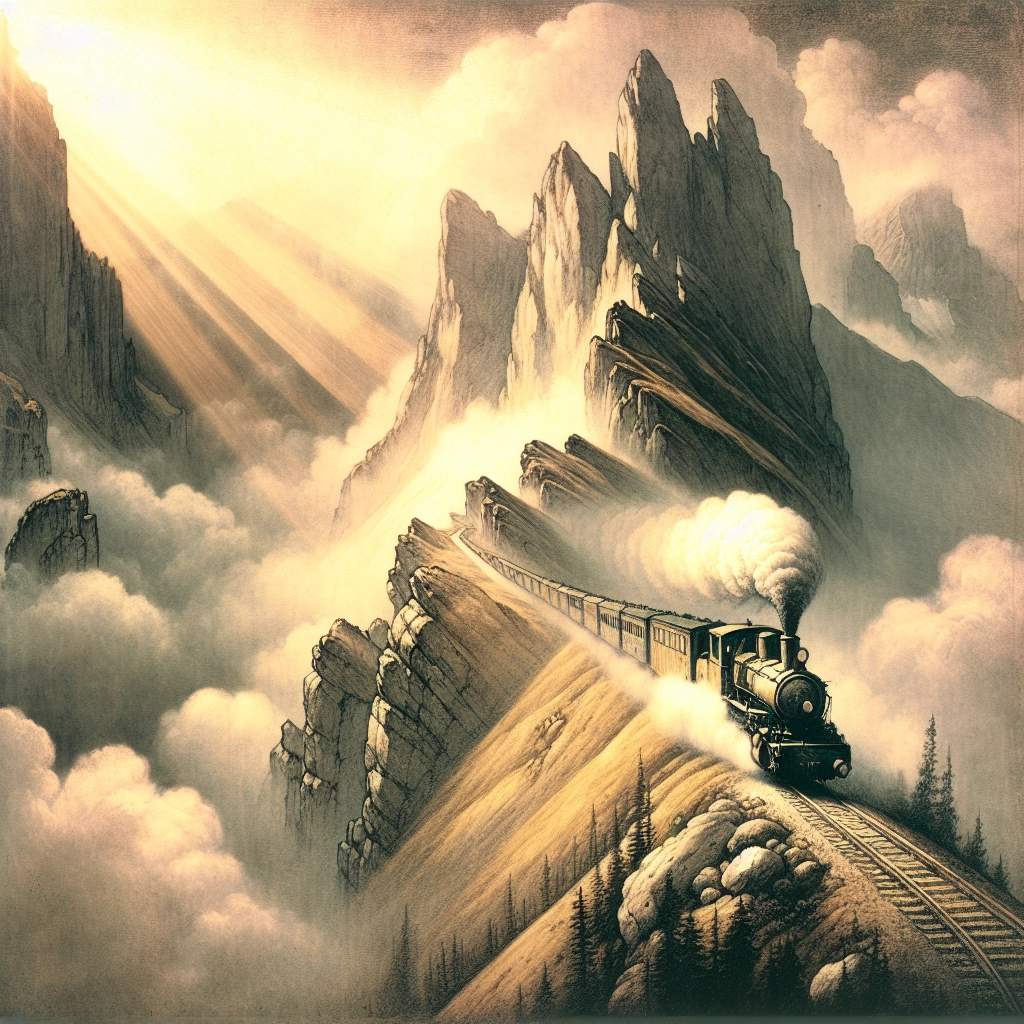
- Published on
- Authors

- Name
- ric de yuga 😄
🚂 Choo-Choo-Choosing to Climb: The Uphill Journey of Trains 🚂
Picture this: you're on a train, winding through a scenic mountain range, and suddenly, you notice the train is chugging uphill. You might find yourself wondering, "How on earth do these massive machines manage to climb such steep inclines without slipping or stalling?" Well, wonder no more! In this blog post, well dive into the fascinating world of train engineering and explore the secrets behind their uphill adventures.
🏔️ The Challenges of Climbing Hills 🏔️
Trains, like any vehicle, face a unique set of challenges when it comes to climbing hills. The main forces at play are:
Gravity: As the train ascends, it must constantly battle against the downward pull of gravity, which tries to slow it down and pull it back.
Friction: The wheels of the train need to maintain sufficient contact and friction with the tracks to avoid slipping.
Weight: The sheer weight of the train, including its cargo and passengers, adds to the difficulty of the climb.
So, how do trains overcome these challenges? Let's find out!
🔧 Engineering Marvels: The Solutions 🔧
Engineers have developed several clever techniques to help trains conquer steep inclines:
Traction: Trains use a combination of wheels and tracks designed to maximize traction. The wheels have a tapered shape that helps them fit snugly against the tracks, while the tracks themselves often have a slightly rough surface to increase friction.
Multiple Engines: Many trains use multiple engines to distribute the power needed to climb hills. By spreading the workload across several engines, trains can generate more pulling power and maintain a steady speed.
Switchbacks: In some cases, the incline may be too steep for a train to climb directly. Engineers solve this problem by creating switchbacks – a series of zigzagging tracks that allow the train to gradually ascend the hill at a gentler angle.
Cog Railways: For extremely steep inclines, engineers may use a special type of railway called a cog railway. These trains have a toothed wheel (the cog) that meshes with a rack (a toothed rail) between the tracks. The cog provides extra traction and prevents the train from slipping backward.
🌄 A Scenic Journey to the Top 🌄
Thanks to these incredible engineering feats, trains can safely and efficiently climb even the steepest hills, offering passengers breathtaking views of the surrounding landscape. From the Rocky Mountains in North America to the Swiss Alps in Europe, train journeys through mountainous regions have become iconic adventures sought out by travelers worldwide.
So, the next time you find yourself on a train chugging uphill, take a moment to appreciate the remarkable engineering that makes it all possible. And if you're feeling extra curious, try spotting some of the techniques mentioned above in action – it's like a real-life game of "I Spy" for train enthusiasts!
🚞 All Aboard the Uphill Express! 🚞
In conclusion, trains are more than just a mode of transportation – they're a testament to human ingenuity and our ability to overcome even the most daunting challenges. By harnessing the power of friction, traction, and clever engineering, trains can conquer hills and mountains, taking us on unforgettable journeys through some of the world's most beautiful landscapes.
So, the next time someone asks you, "How do trains go uphill?" you'll be ready with an answer that's both informative and entertaining. And who knows? You might just inspire the next generation of engineers to dream up even more innovative solutions to keep our trains chugging along, no matter how steep the climb.
